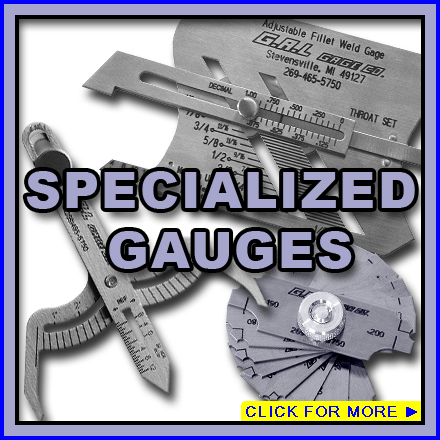The Ultimate Guide to Fillet Weld Quality Assurance: Making Certain Toughness and Durability in Your Welded Joints
In the realm of welding, guaranteeing the strength and durability of fillet welds is vital for the honesty of bonded joints. As we embark on this exploration of fillet weld top quality control, we will uncover necessary factors that affect weld stamina, dive into reliable assessment techniques, and discuss techniques for stopping usual weld issues.
Importance of Fillet Weld Quality Control
Ensuring proper fillet weld top quality control is extremely important in assuring the architectural integrity and longevity of bonded parts in different industries. Fillet welds are commonly made use of in architectural steelwork, bridges, pressure vessels, pipes, and various other important facilities where the strength of the weld is vital to overall safety and security and efficiency. Quality assurance actions such as visual assessments, non-destructive testing, and adherence to welding procedures aid determine prospective flaws like absence of combination, insufficient infiltration, undercutting, or too much support.
Key Elements Influencing Weld Strength
Accomplishing optimal weld toughness needs careful factor to consider of various vital elements that affect the stability and resilience of the bonded joint. The first important element appertains joint preparation, which involves cleaning up the base steels to remove any kind of contaminants that can weaken the weld. In addition, the fit-up of the joint is vital to make sure correct penetration and blend of the filler product.
The selection of the suitable welding technique and criteria additionally plays a considerable role in determining weld toughness. Aspects such as warm input, traveling rate, and electrode angle can affect the quality of the weld. Maintaining the right interpass temperature level throughout multi-pass welding is important to stop fracturing and ensure a strong bond in between the layers.
Furthermore, the selection of filler material and its compatibility with the base metals is critical for attaining high weld strength. Using filler material with the suitable mechanical buildings can enhance the total honesty of the weld. Post-weld warmth therapy and appropriate evaluation methods are essential steps in ensuring the strength and resilience of the welded joint.
Evaluation Methods for Weld Integrity

One more essential examination technique is fluid penetrant testing, where a fluid dye is put on the weld surface area - Gauge Fillet Weld. The color seeps right into any type of surface-breaking defects, making them noticeable under UV light. This technique works for identifying defects that might not be visible to the nude eye


Ultrasonic screening is additionally commonly made use of for inspecting weld stability. High-frequency audio waves are directed into the weld, and any kind of disruptions in the sound wave pattern indicate potential issues like splits or absence of fusion.
These evaluation approaches play a vital role in making sure the top quality and dependability of welds, eventually contributing to the overall stamina and resilience of welded joints in commercial settings.
Stopping Usual Weld Issues
In order to maintain the architectural honesty of welded joints in industrial applications, it is vital to implement precautionary that site procedures to deal with usual weld issues. One usual defect is lack of fusion, where the filler product falls short to bond effectively with the base metals, causing weak spots in the weld. This can be avoided by making certain proper warmth control and utilizing the correct welding strategy.
An additional regular problem is porosity, created by gas entrapment in the weld metal during the welding process. To prevent this, it is crucial to cleanse the base steels thoroughly, use completely dry electrodes, and maintain an ideal welding environment with correct ventilation.
Additionally, splits in welds can endanger the joint's toughness. To prevent this issue, it is essential to manage the air conditioning price after welding, use preheating when essential, and choose appropriate welding criteria.
Enhancing Weld Sturdiness With Correct Strategies
To bolster the long life and integrity of bonded structures, employing sophisticated welding methods is vital. One critical method to improve weld longevity is to helpful resources make sure proper weld bead positioning. By positioning the weld bead properly within the joint, the weld's stamina and resistance to tiredness can be considerably improved. In addition, using the proper welding parameters, such as voltage, current, and travel rate, is important for accomplishing a long lasting weld. These specifications straight impact the weld's infiltration, fusion, and general quality, adding to its longevity.
Selecting the right filler metal and guaranteeing the tidiness of the base steels can stop additions and other flaws that can compromise the weld's durability. By implementing these proper techniques, welders can ensure that their bonded joints show phenomenal toughness and toughness, fulfilling the highest possible top quality criteria.
Verdict
To conclude, preserving high top quality control requirements for fillet welds is essential for making certain the toughness and sturdiness of bonded joints. By comprehending the essential elements impacting weld toughness, making use of evaluation approaches for weld stability, stopping typical weld flaws, and utilizing proper techniques, welders can enhance the overall durability of their welds. It is important to prioritize quality control steps to produce reliable and durable bonded joints.
In the world of welding, guaranteeing the toughness and durability of fillet welds is paramount for the stability of welded joints. As we get started on this exploration of fillet weld high quality control, we will reveal vital variables that affect weld stamina, dive right into efficient evaluation methods, and talk about techniques for protecting against typical weld problems.Achieving optimum weld stamina requires cautious consideration of numerous vital factors that affect the stability and resilience of the welded joint (Gauge Fillet Weld).In verdict, preserving high top quality control standards for fillet welds is critical for guaranteeing the toughness and durability of welded joints. By recognizing the key aspects affecting weld stamina, utilizing evaluation techniques for weld honesty, preventing common weld problems, and employing proper techniques, welders can boost the look at here general resilience of their welds
Comments on “Gauge Fillet Weld Fundamentals: Best Practices and Common Mistakes”